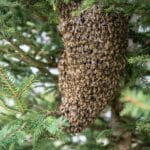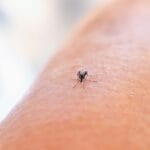Main Points
- Having a pest-free home is important for your health and can save you a lot of money.
- Regular cleaning and proper storage of food are key steps in preventing pests.
- Sealing off entry points like cracks and gaps is a proactive way to keep pests out.
- Doing regular inspections can catch infestations early, making them easier to deal with.
- There are natural and chemical treatments available, but knowing when to call in professionals is important.
The Importance of Pest-Free Homes

Imagine waking up to the sound of something scurrying in the walls or finding unwanted visitors in your pantry. Not a nice thought, is it? That’s because our homes are our safe spaces, and having pests can disturb that peace. More importantly, pests aren’t just annoying; they can pose serious health risks to you and your family. They can spread diseases, worsen allergies, and even cause damage to your property. So, keeping your home free of pests is essential for your health and comfort.
Why a Pest-Free Home is Healthier
When you live in a home free of pests, you’re not at risk of contracting diseases that pests can carry, such as salmonella and hantavirus. On top of that, a home without pests benefits those with allergies and asthma by keeping the air free of irritants like pest droppings and shed skins. Plus, you’ll sleep better knowing your home is a safe, clean environment.
Money Saved by Detecting Pests Early
Spotting a pest issue early on can save you a lot of money in the future. If you overlook the signs of an infestation, you might end up having to pay for expensive repairs due to damages to your home’s structure, wiring, and plumbing. So, it’s not just about comfort, it’s also about keeping your hard-earned money where it should be – in your pocket.
Recognizing Pests: Understand Your Foe
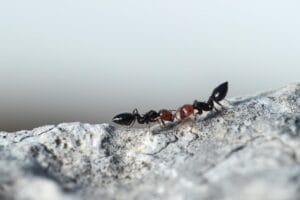
Before you can start pest control, you need to understand what you’re facing. Different pests need different strategies. For instance, the way you’d handle ants is not the same as how you’d address a rodent issue.
Typical pests consist of a variety of insects and rodents that can invade your home. For a comprehensive list and tips on how to manage them, check out winning strategies for a bug-free home.
- Ants
- Cockroaches
- Rodents
- Termites
- Spiders
Every pest leaves behind some evidence of its presence. This could be droppings, damage to food packaging, or nests in out-of-the-way corners. Knowing these signs can help you act quickly and effectively.
Usual Suspects Around the House
Ants, who invade in search of sugar, cockroaches, who love warm, damp places, and mice, who make nests out of soft things and can gnaw through wires, are some of the most frequent uninvited guests in the home.
Infestation Indications
Pests are often out of sight, but they usually leave clues. Watch for signs of pests and ensure a comprehensive pest control inspection to identify and address any issues promptly.
- Excrement or trails of urine
- Chew marks on furniture or electrical wires
- Odd behavior from pets, who often spot pests before their owners
If you see one bug, it usually means there are more out of sight. So, if you notice any of these signs, you should act fast.
Preventative Steps: The Best Defense is a Good Offense

Preventing an infestation is much simpler and cheaper than dealing with one. By maintaining a clean home and removing anything that might attract pests, you can reduce the likelihood of a pest problem. Here are some steps you should take on a regular basis: For more detailed guidance, consider using a Pest Control Checklist to ensure all preventative measures are covered.
Housekeeping Practices That Keep Pests Away
Keeping a clean house is the best way to keep pests away. There are a few habits that can make a big difference:
- Make sure to clean countertops and sweep your floors every day to get rid of any food particles or spills.
- Keep all food in sealed containers to prevent bugs from finding it.
- Don’t forget to regularly empty your trash and clean the bin to get rid of smells that might attract bugs.
When you make these actions part of your daily routine, you’re creating a solid defense against pests. For more detailed strategies, check out our DIY pest control solutions you can try today.
Keeping Your Food Safe from Pests
Bugs are always on the hunt for a snack. Don’t let your pantry be their buffet. Keep your food, especially items that spoil, stored correctly. Airtight containers are a must for pantry items. And remember, pet food is still food; bugs don’t discriminate.
Outdoor Landscaping and Maintenance
It’s not just the inside that counts. The exterior of your home can also attract pests. Keep bushes trimmed and away from your home’s siding to minimize pest highways into your abode. Regularly clear out gutters and drains, as standing water is a breeding ground for insects like mosquitoes.
Sealing Up Entry Points: How to Keep Pests Out

Pests are always looking for a way in, and even the tiniest crack can be a welcome mat. Take a look around your home for any possible entry points and make sure they’re sealed. Here’s how to do a comprehensive pest control inspection:
Sealing Cracks and Openings
Use caulk to close up any cracks or openings around windows, doors, and foundations. Be sure to focus on areas where utilities and pipes enter the home, as these are often forgotten.
Securing Doors and Windows
Ensure all doors and windows shut correctly. Install weather stripping or door sweeps if there are any gaps. Repair any tears in screens to prevent flying bugs from entering.
Consistent Check-ups: Stay Alert
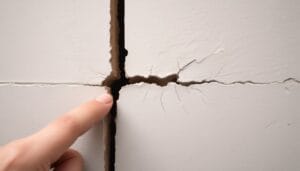
Running a routine check-up of your home can prevent a minor problem from becoming a major issue. Keep an eye out for signs of pests, inspect your home’s exterior for any weak points, and make the necessary corrections. This doesn’t have to be a daunting task—a simple inspection can make a significant difference.
Here’s a straightforward inspection checklist:
- Examine your home’s foundation for cracks and seal them up.
- Look for signs of pests in your attic and basement.
- Check under sinks for any leaks or moisture that could attract pests.
- Make sure all food is stored securely and no crumbs or leftovers are out.
Regular check-ups are a key part of maintaining your home. They’re like a doctor’s visit for your house, catching problems early and keeping it in good health.
How to Inspect Your Home Yourself
Checking your home for pests can be a fun and educational DIY project. All you need is a flashlight and a screwdriver. Use the flashlight to look into dark corners and the screwdriver to check wooden surfaces for any weak points that might suggest termites. Remember to check for dampness, as many pests are attracted to moisture. If you’re not sure what to look for, there are many resources online that can help you conduct a thorough home inspection.
Don’t forget to check both inside and outside your home. Outside, look for any holes or nests in the ground, as well as any tracks or damaged plants that could be a sign of larger pests like rodents or deer. Inside, be on the lookout for any live or dead pests, droppings, and nesting materials. Always make sure to follow safety guidelines, especially when checking potentially dangerous areas like crawl spaces or attics.
When to Call the Experts
If your inspection reveals signs of a large infestation or if you’re dealing with a pest that poses a serious health risk, like wasps or rats, it’s time to call the professionals. Pest control experts have the knowledge, tools, and access to stronger treatments that the general public does not. They can also provide a more detailed inspection to determine the full scope of the issue and suggest a complete treatment plan.
What to Do When Pests Invade
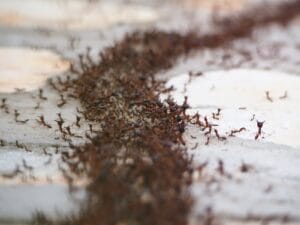
Despite our best efforts, sometimes pests still manage to invade our homes. When this occurs, it’s crucial to take quick action to control and eradicate the infestation before it gets out of hand.
If you’re dealing with a minor issue, like a couple of ants or one wasp, you might be able to tackle it on your own using treatments you can buy at the store. But if you’re facing a bigger problem, or if you just don’t feel comfortable dealing with pests, it’s a good idea to call in the professionals.
Non-Chemical Methods for Initial Infestations
If you’re not a fan of using chemicals, there are non-chemical methods that work well for initial infestations:
- Several essential oils, such as peppermint, tea tree, and eucalyptus, have been found to deter certain insects.
- Diatomaceous earth, a type of powder, has the ability to kill bugs by dehydrating them.
- When used properly, boric acid can help manage populations of cockroaches and ants.
It’s crucial to follow the directions exactly when using these remedies to make sure they’re not only effective but also safe for your family and pets.
For instance, if you see ants in your kitchen, you can use a mixture of vinegar and water to clean surfaces and disrupt their scent trails. This simple solution often deters ants from returning.
Chemical Treatments: What You Need to Know
Chemical treatments can be necessary for more serious infestations or when natural methods are not effective. It’s important to use these treatments responsibly to protect your health and the environment. Always read and follow the label instructions, and only use pesticides approved for home use. When in doubt, consult with a professional who can apply treatments safely and effectively.
Long-term Strategy: Sustainable Pest Control
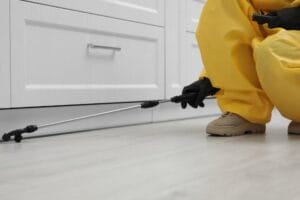
A sustainable pest control strategy requires ongoing observation and the ability to adjust your methods as necessary. Documenting any pest activity and the steps you’ve taken to combat it will allow you to identify trends and determine the best course of action. For more insights, explore these 10 proven strategies for a bug-free home.
It’s a good idea to get a yearly contract with a pest control service for routine check-ups and treatments. This can be really beneficial if you’re dealing with ongoing issues or if you want to feel secure and you live in a place that’s known for infestations.
Commonly Asked Questions
How frequently should I do a pest inspection?
Generally, you should check your house for pests every season—that’s four times a year. But, if you live in a place with a lot of pests or if you’ve had pest problems before, you might need to do inspections more often. For more detailed guidance, consider following a comprehensive pest control inspection process.
Are there pest control methods that are safe for pets?
Yes, there are many pest control options that are safe for pets, including natural deterrents and low-toxicity baits. Always make sure to read the label to ensure the product is safe for use around animals, and keep pets away from treated areas until they are dry or as instructed by the product guidelines.
What are the early warning signs of an infestation?
Early signs include seeing pests during the day, finding droppings or damage to food packaging, and noticing an unusual smell. Sounds within walls or ceilings can also indicate rodents or insects are present.
Is it possible for me to handle pest control by myself?
When it comes to minor problems, you can often handle pest control on your own. But if you’re dealing with a larger infestation or pests that could harm your health, you should probably call in the professionals.
How do I keep pests out of my home throughout the year?
Various pests become active at different times throughout the year. To keep rodents out, make sure your home is sealed up before winter hits. When spring and summer roll around, get rid of standing water and yard debris to keep insects at bay.
Keeping a home free of pests is not only more comfortable, but it’s also safer and healthier for all inhabitants. With the right knowledge and actions, you can keep your home unattractive to unwanted critters. Remember, the key to effective pest control is consistency and vigilance. By following the steps outlined in this article, you can keep your home free of pests and enjoy the peace and tranquility that comes with a clean, safe living environment.


